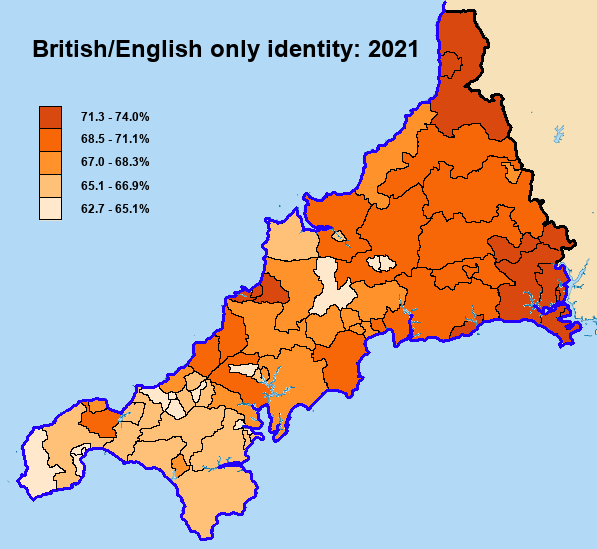In 2011 59% of Cornish residents ticked the ‘English only’ box in the census. By 2021 only 16% did, with 52% now claiming they possessed just a British identity. However, this startling shift in identity in just ten years was not the sign of an earthquake in identity politics following brexit. It was merely due to a different ordering of the list of tick boxes, with British being placed at the top in 2021, replacing English, which had this honour in 2011.
This suggests that most people make little distinction between the two identities of English and British so any conclusions that might be drawn about Englishness as opposed to Britishness are hardly very meaningful. (For such conclusions on the 2011 census see here for Englishness and here for Britishness.)
If we combine the two, we can arrive at the number of people who claimed a British or English identity in the two most recent censuses.
What does this tell us? To some extent it’s obviously a mirror image of the geography of the Cornish identity. Moreover, overall there was a general decline in the total proportions claiming an English/British identity over the course of the 2010s. Within this general fall, the geographical pattern has not changed markedly. The far north and south east and the Newquay district have the highest number of British/English identifiers, while the districts with the least are now more scattered rather than being concentrated in Kerrier.


